- Diagnostics refers to diagnosing flaws, damage or anomalies in systems. We pursue methodologies for detection, localization and quantification of flaws, damage or anomalies.
- Prognostics involves forecasting the future system performance given the current state of damage/flaw or anomaly.
- We pursue the development of physics-based, data-driven or hybrid models for diagnostics and prognostics.
- We particularly pursue methods for the quantification and inclusion of uncertainty, both aleatory and epistemic, in diagnostics and prognostics.
System modeling methodologies:
- Physics-based models (e.g., finite element models, finite difference models)
- Machine learning models (e.g., deep neural networks, support vector machines, etc.)
Data source examples:
- System operational data (historical and current)
- Aviation data (DASHlink, Sherlock, FlightAware)
- Power grid data
- Patient data
- Sensor data (thermal, optical, and mechanical sensing)
- Electromagnetic waves (Infrared Thermography)
- Optical waves (Digital Image Correlation (DIC), laser velocimetry)
- Mechanical waves (mechanical vibrations, Lamb waves)
Uncertainty Quantification in Diagnosis and Prognosis
- Global sensitivity analysis
- Bayesian updating of system state and model
- Quantification of diagnosis uncertainty
- Calibration of prognosis model error
- Quantification of prognosis uncertainty
Applications
Concrete Structures Health Monitoring
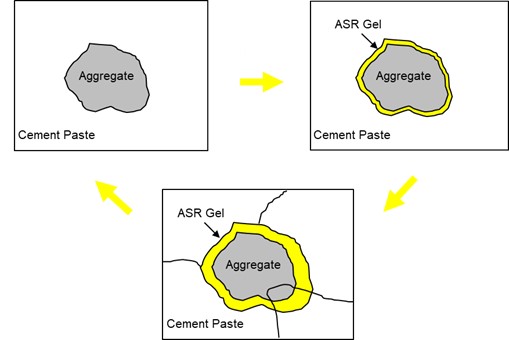
NDE Techniques are being studied to detect and localize damage due to alkali-silica reaction (ASR) in concrete specimens.
- ASR is a chemical reaction between highly alkaline cement paste and reactive aggregates in cement, produced over time.
- In the presence of moisture, ASR gel expands, producing cracks in the specimens.
Concrete Experimental Specimens
Plain Concrete
- Vanderbilt - 1 - 2’x2’x6”
- Alabama - 4 - 2’x1’x1’
Reinforced Concrete
- Nebraska - 4 – 2’x1’x1’
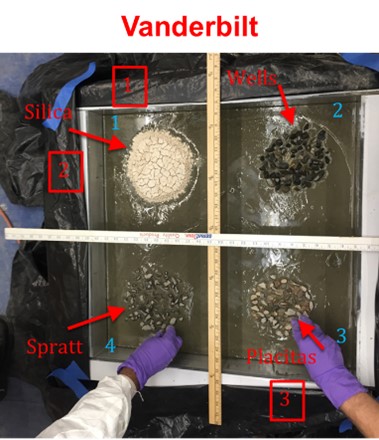
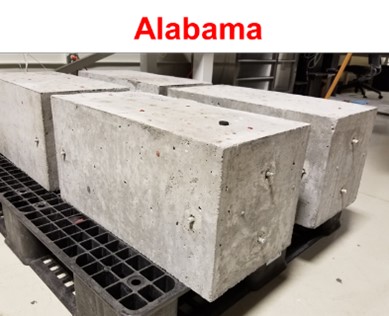
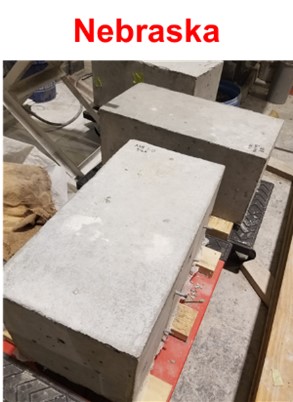
Concrete Damage Diagnosis Techniques
- Vibro-acoustic modulation (VAM): Modulation of a higher excitation frequency by a lower excitation frequency caused by delamination or cracks in structural components, resulting in the appearance of sidebands in the linear spectral response. The sidebands are used to both detect and localize the damage.
- Harmonic Testing: Innovative damage-sensitive features for damage detection based on higher singular vectors. Deviation from sinusoid used to localize damage.
- Machine Learning: Training of machine learning models using finite element simulations and experimental data. Both prediction and classification models are constructed, and used for damage localization with actual physical specimens.
- Feed-forward neural networks and Convolutional neural networks
- Hybrid learning (multi-fidelity finite element models and experimental data)
- Transfer learning (using CNN cores from RESNET, ImageNet etc.)
Real-Time Cure Monitoring of Fiber-reinforced Polymer Composites using Infrared Thermography
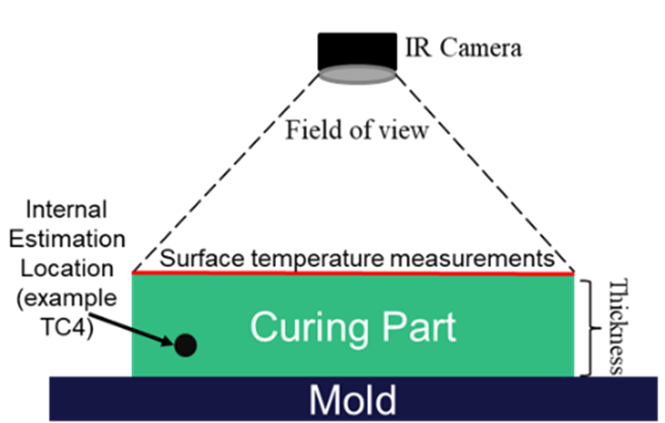
- Real-time monitoring of the curing process is crucial for reducing cycle time, energy usage, and timely flaw identification and repair.
- A methodology utilizing heat conduction and cure kinetics models, surface temperature measurements (IR thermography), and a Kalman filter was developed for real-time cure monitoring.
- Experimental validation by monitoring key process variables in an FRP composite part manufactured at the National Renewable Energy Lab (NREL) Composites Manufacturing Education and Technology (CoMET) facility.
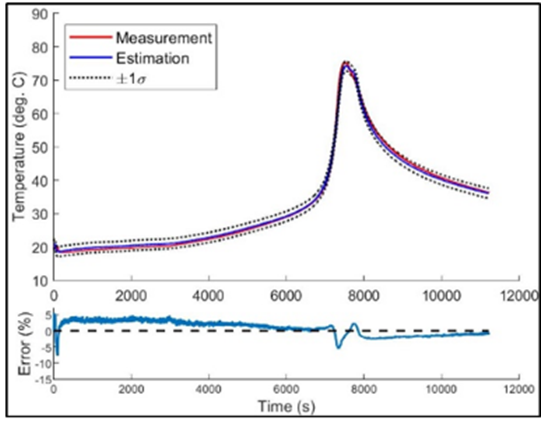
Bayesian information fusion for crack size diagnosis in thin plate structures
Ultrasonic guided waves are commonly used for monitoring fatigue-induced crack growth in thin metallic structures. We developed a methodology for fusing information from multiple actuator-sensor paths to compensate for environmental effects on a sensed signal, and to estimate crack size under varying environmental conditions.
- Guided waves actuated and sensed using piezoelectric transducers
- Changes in the sensed signal characteristics, as captured by the change in the damage index, analyzed to estimate the crack size.
- Damage index defined based on short-time Fourier transform
- Computational modeling of the governing physics
- Sensitivity analysis, dimension reduction and surrogate modeling
- Bayesian technique to fuse information obtained from multiple actuator-sensor paths

Digital twin for intelligent maritime vessel maintenance and operations

- Monitoring and prognosis of the ship fatigue damage accumulation to support maintenance and operational decisions
- Fatigue damage inferred from the observed data and vessel-specific analysis models
- Digital Twin created by integrating the following data-driven and analysis models, as well as vessel structure and load data
- Vessel-specific maintenance and/or operational decisions can be made using the digital twin
|
Data: |
Analysis Models: |
|
|
Aircraft Wing Health Monitoring Digital Twin
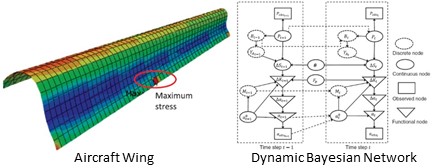
- Track fatigue crack growth in an aircraft wing to inform maintenance decisions
- Use a dynamic Bayesian network to build a versatile probabilistic model for diagnosis and prognosis
- Integrate physics models and various aleatory and epistemic uncertainty sources in crack growth prediction
En-route safety assessment of aircraft within an airspace sector
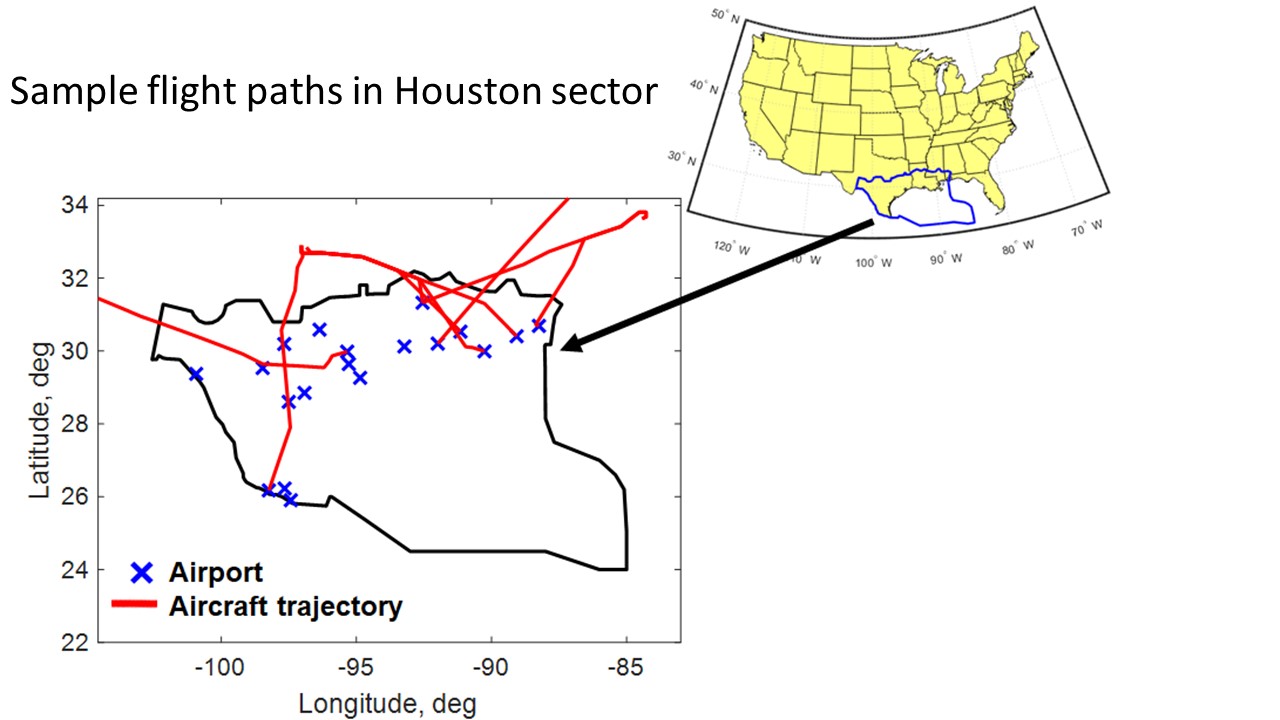
Reliability analysis is performed for a system comprising many aircraft in mid-flight, and involves
- Bayesian updating of aircraft models with historical flight & weather data
- Prognosis of future trajectories with updated aircraft models
- Formulating efficient Monte Carlo simulation methods for reliability analysis
Aviation accident risk prognosis by building a Bayesian network using historical accident data
- Developed a graphical representation to facilitate the understanding of escalation of initiating events into aviation accidents (airline accidents that happened from 1982 to 2006).
- Developed a Bayesian network representation of all the accidents by quantifying the causal and dependent probability relationships among a wide variety of contributory factors and event sequences in terms of aircraft damage and personnel injury.
- The Bayesian network could be used to estimate the conditional probabilities of future aviation accidents given a sequence of events experienced by an aircraft.
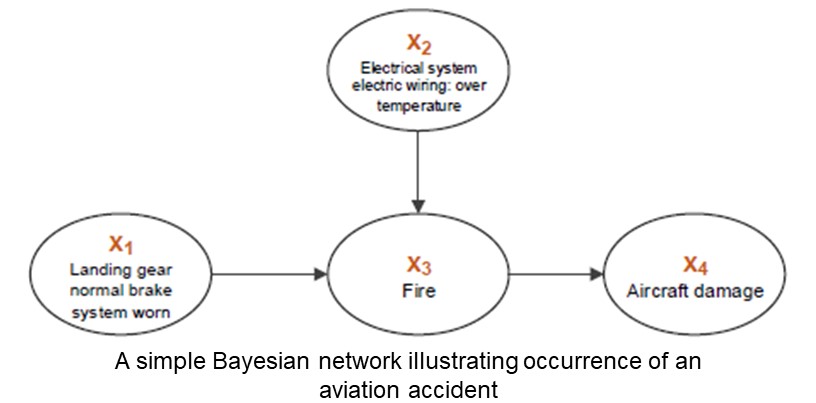
Diagnosis and prognosis for process monitoring and control in additive manufacturing
- Monitor the manufacturing process using advanced sensors such as infrared thermal camera, profilometer, high-speed optical camera, etc. during the manufacturing process
- Diagnosis: Infer the quantity of interest ( QoI ) , i .e., quality metric such as porosity/voids, deformation, geometry, etc. in the partially manufactured part
- Prognosis: Predict the quality of the finished p art by integrating monitoring data and prediction model (either physics-based or data- driven)
-
Adjust process parameters in future layers
, if ne
cessary, based on diagnosis and prognosis steps
to manufacture parts of desired quality
Funding


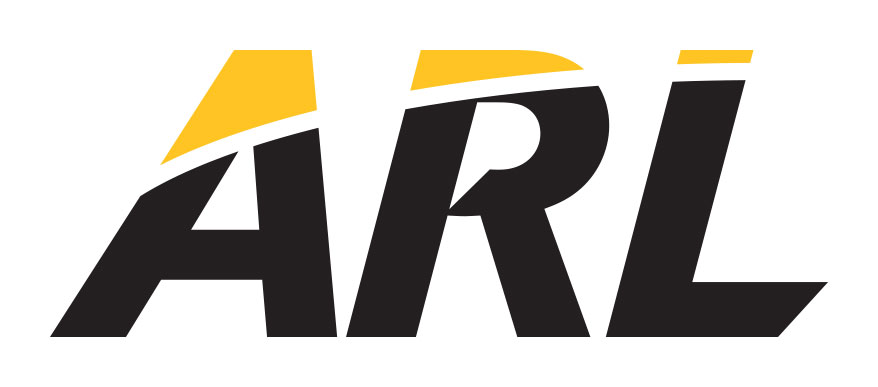
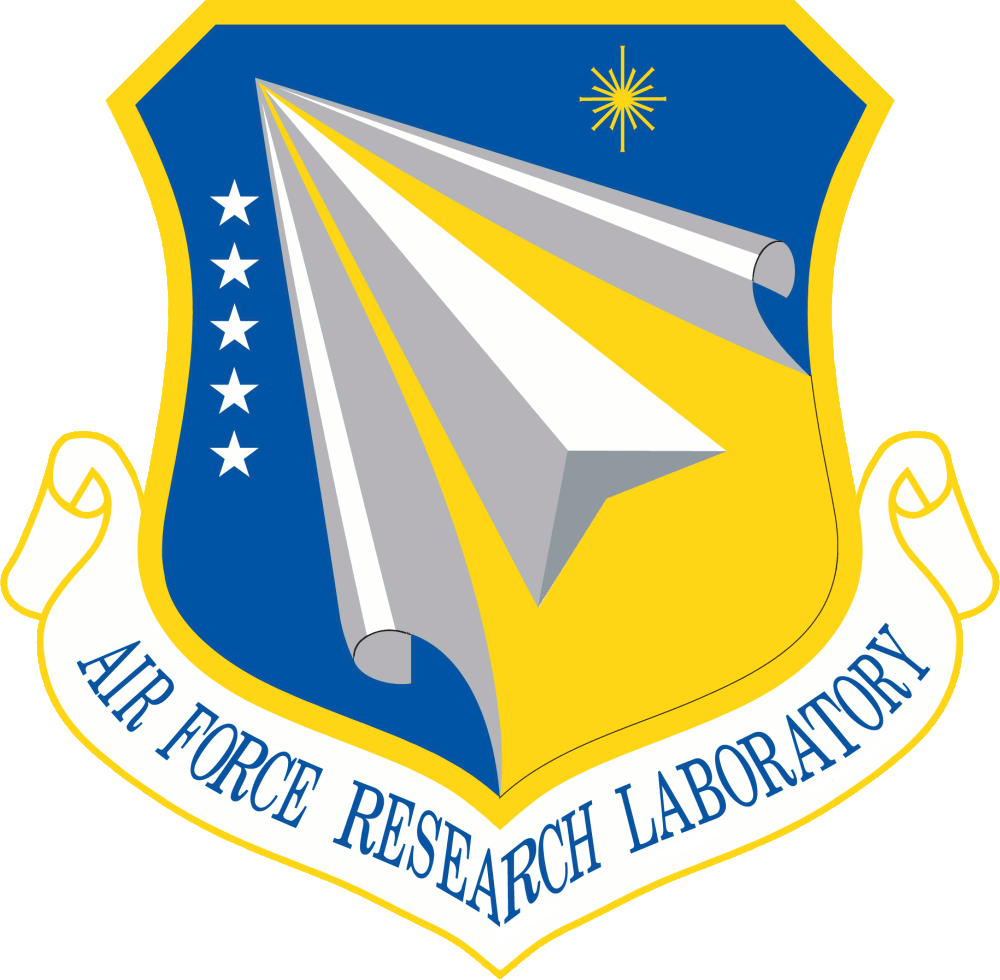

![]()

Current People
- Sankaran Mahadevan, Professor
- Douglas Adams, Professor
- Pranav Karve, Assistant Research Professor
- Abhinav Subramanian, Postdoctoral Research Scholar
- Paromita Nath, Postdoctoral Fellow
- Yanqing Bao, Postdoctoral Research Scholar
- Sarah Miele, Ph.D. Student
- Yulin Guo, Ph.D. Student
- Gbandi Nikabou, Ph.D. Student
- Christopher Nash
- Julia Finfrock, Undergraduate Researcher
- David Koester, Research Engineer
- Garrett Thorne, Staff Engineer
Publications
- Bao, Y., & Mahadevan, S. (2015). Uncertainty quantification of thermal image-based concrete diagnosis. International Journal of Sustainable Materials and Structural Systems , 2 (1-2), 77-95.
- Bao, Y., & Mahadevan, S. (2019). Harmonic vibration testing for damage detection and localization in concrete. Structural Health Monitoring , 18 (5-6), 1820-1835.
- Karve, P., & Mahadevan, S. (2020). On the performance of vibro‐acoustic‐ modulation‐based diagnosis of breathing cracks in thick, elastic slabs. Structural Control and Health Monitoring, 27(3), e2470.
- Karve, P., Miele, S., Neal, K., Mahadevan, S., Agarwal, V., Giannini, E. R., & Kyslinger , P. (2020). Vibro-acoustic modulation and data fusion for localizing alkali–silica reaction–induced damage in concrete. Structural Health Monitoring, 1475921720905509.
- Karve, P. M., Guo, Y., Kapusuzoglu , B., Mahadevan, S., & Haile, M. A. (2020). Digital twin approach for damage-tolerant mission planning under uncertainty. Engineering Fracture Mechanics , 225 , 106766.
- Nash, C., Karve, P., Adams, D., Mahadevan, S., & Thorne, G. (2020). Real-time cure monitoring of fiber-reinforced polymer composites using infrared thermography and recursive Bayesian filtering. Composites Part B: Engineering , 198 , 108241.






